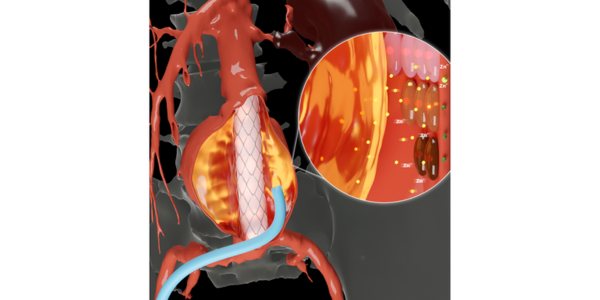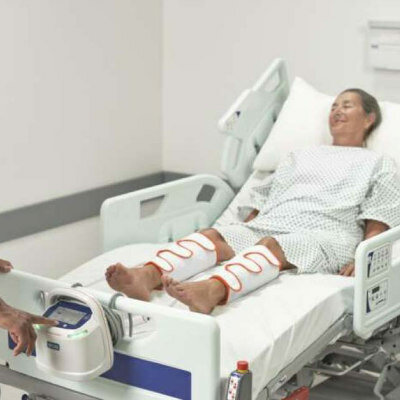New Hydrogel Features Enhanced Capabilities for Treating Aneurysms and Halting Progression
|
By HospiMedica International staff writers Posted on 27 Mar 2024 |

Aneurysms can develop in blood vessels in different body areas, often as a result of atherosclerosis, infections, inflammatory diseases, and other risk factors. These conditions lead to chronic inflammation, causing the cells lining the inside of blood vessels to produce an overabundance of enzymes known as matrix metalloproteinases (MMPs). These MMPs break down the fibers in the vessel walls, weakening them and potentially causing them to bulge outward, creating a risk of fatal rupture. Particularly, aneurysms in the aorta, the largest artery in the body, represent the second most common type of aortic disease and are a significant cause of death globally. Patients experiencing symptoms or rapid growth of an aneurysm are encouraged to seek treatment, with minimally invasive approaches recommended for those with comorbidities or at risk from open surgery.
Traditionally, aneurysms are treated non-invasively by inserting a stent graft to reinforce the vessel walls and prevent blood from entering the aneurysm. However, this method can fail due to leaks between the stent graft and the endothelial wall, which can allow blood to re-enter the aneurysm. To address these leaks, known as endoleaks, embolic agents are used, but they can be expensive, challenging to apply, and sometimes ineffective, often requiring further procedures. Now, scientists at the Terasaki Institute for Biomedical Innovation (TIBI, Los Angeles, CA, USA) have created an innovative, injectable shear-thinning hydrogel for the treatment of abdominal aortic aneurysms that not only more effectively seals them off but also halts their growth.
This embolic agent was formulated using a gelatin-based shear-thinning hydrogel that solidifies upon injection, enhanced with silicate nanoplatelets for improved cohesion and blood clotting. Additionally, it incorporates doxycycline (DOX), an FDA-approved drug known for eliminating dysfunctional endothelial cells and neutralizing MMPs. DOX achieves this through both an immediate burst release for rapid cell removal and a sustained release for long-term MMP inhibition. This dual-action process was validated in animal studies using the new hydrogel in pig aorta samples.
Further experiments showed that adding doxycycline improved the hydrogel's injectability, cohesion, and embolic strength, reducing clotting time by 33%. The new hydrogel also succeeded in embolization in a laboratory model of endoleaks and was shown to impact the expression of various proteins critical to endothelial cell function, blood vessel development, and clot formation. These results suggest the potential for using this novel hydrogel to treat aneurysms elsewhere in the body and highlight the need for further studies on its long-term safety and effectiveness.
“The work here represents a significant advancement in the treatment of aneurysms,” said Ali Khademhosseinini, Ph.D., TIBI’s Director and CEO. “It is our hope that this work can be expanded into further tests and clinical trials so that we may bring this technology to the patients.”
Related Links:
TIBI
Latest Critical Care News
- 'Universal' Kidney to Match Any Blood Type
- Light-Based Technology to Measure Brain Blood Flow Could Diagnose Stroke and TBI
- AI Heart Attack Risk Assessment Tool Outperforms Existing Methods
- Smartphone Imaging System Enables Early Oral Cancer Detection
- Swallowable Pill-Sized Bioprinter Treats GI Tract Injuries

- Personalized Brain “Pacemakers” Could Help Patients with Hard-To-Treat Epilepsy
- Microscopic DNA Flower Robots to Enable Precision Medicine Delivery
- Origami Robots to Deliver Medicine Less Invasively and More Effectively
- Improved Cough-Detection Technology Aids Health Monitoring
- AI Identifies Children in ER Likely to Develop Sepsis Within 48 Hours
- New Radiofrequency Therapy Slows Glioblastoma Growth
- Battery-Free Wireless Multi-Sensing Platform Revolutionizes Pressure Injury Detection
- Multimodal AI to Revolutionize Cardiovascular Disease Diagnosis and Treatment
- AI System Reveals Hidden Diagnostic Patterns in Electronic Health Records
- Highly Sensitive On-Skin Sensing Monitor Detects Vitamin B6 and Glucose in Sweat
- Artificial Intelligence Revolutionizing Pediatric Anesthesia Management
Channels
Surgical Techniques
view channel
Minimally Invasive Endoscopic Surgery Improves Severe Stroke Outcomes
Intracerebral hemorrhage, a type of stroke caused by bleeding deep within the brain, remains one of the most challenging neurological emergencies to treat. Accounting for about 15% of all strokes, it carries... Read more
Novel Glue Prevents Complications After Breast Cancer Surgery
Seroma and prolonged lymphorrhea are among the most common complications following axillary lymphadenectomy in breast cancer patients. These postoperative issues can delay recovery and postpone the start... Read morePatient Care
view channel
Revolutionary Automatic IV-Line Flushing Device to Enhance Infusion Care
More than 80% of in-hospital patients receive intravenous (IV) therapy. Every dose of IV medicine delivered in a small volume (<250 mL) infusion bag should be followed by subsequent flushing to ensure... Read more
VR Training Tool Combats Contamination of Portable Medical Equipment
Healthcare-associated infections (HAIs) impact one in every 31 patients, cause nearly 100,000 deaths each year, and cost USD 28.4 billion in direct medical expenses. Notably, up to 75% of these infections... Read more
Portable Biosensor Platform to Reduce Hospital-Acquired Infections
Approximately 4 million patients in the European Union acquire healthcare-associated infections (HAIs) or nosocomial infections each year, with around 37,000 deaths directly resulting from these infections,... Read moreFirst-Of-Its-Kind Portable Germicidal Light Technology Disinfects High-Touch Clinical Surfaces in Seconds
Reducing healthcare-acquired infections (HAIs) remains a pressing issue within global healthcare systems. In the United States alone, 1.7 million patients contract HAIs annually, leading to approximately... Read moreHealth IT
view channel
Printable Molecule-Selective Nanoparticles Enable Mass Production of Wearable Biosensors
The future of medicine is likely to focus on the personalization of healthcare—understanding exactly what an individual requires and delivering the appropriate combination of nutrients, metabolites, and... Read moreBusiness
view channel
Philips and Masimo Partner to Advance Patient Monitoring Measurement Technologies
Royal Philips (Amsterdam, Netherlands) and Masimo (Irvine, California, USA) have renewed their multi-year strategic collaboration, combining Philips’ expertise in patient monitoring with Masimo’s noninvasive... Read more
B. Braun Acquires Digital Microsurgery Company True Digital Surgery
The high-end microsurgery market in neurosurgery, spine, and ENT is undergoing a significant transformation. Traditional analog microscopes are giving way to digital exoscopes, which provide improved visualization,... Read more
CMEF 2025 to Promote Holistic and High-Quality Development of Medical and Health Industry
The 92nd China International Medical Equipment Fair (CMEF 2025) Autumn Exhibition is scheduled to be held from September 26 to 29 at the China Import and Export Fair Complex (Canton Fair Complex) in Guangzhou.... Read more














